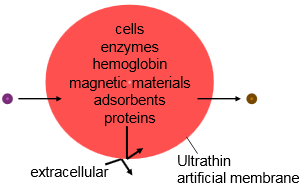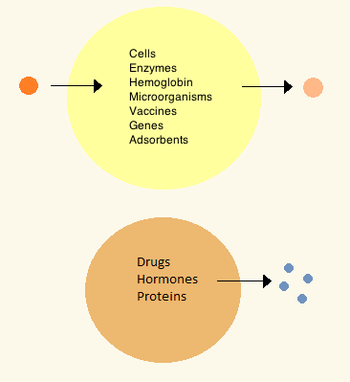Building Artificial Cells Will Be a Noisy Business:

Engineers like to make things which really work. And if they want to make something work using nanoscale components the size of proteins, antibodies and viruses mimicking the behaviour of cells is a good place to start as cells carry a huge amount of information in a very tiny packet. As Erik Win-free, professor of Computer Science, computation also neutral systems and bioengineering, explain ‘I tend to think of cells as really tiny robots. Biology has programmed a natural cell excluding now engineers are starting to think about how we can program an artificial cell. We really want to program something about a micron in size, finer than dimension of a human hair which can interact with its chemical environment and carry out the spectrum of tasks which biological things do but according to our instructions.'
Getting petite things to behave is though a daunting task. A central problem bio-engineers face when working at this scale is which when biochemical circuits like the one Win-free has designed are restricted to an extremely small volume which may stop to function as expected even though the circuit works well in a regular test tube. Lesser populations of molecules simply don't behave the same as larger populations of the same molecules, as a recent paper in Nature Chemistry demonstrates.
Biochemical oscillator:
Win-free and his co-authors began their investigation of the effect of small sample size on biochemical processes with a biochemical oscillator designed in Win-free lab at Caltech. This oscillator is a solution composed of small synthetic DNA molecules which are activated by RNA transcripts and enzymes. Whenever the DNA molecules are activated by other components in the solution a biological circuit is created. These types of circuit fluoresce in a rhythmic pulse for around 15 hours until its chemical reactions slow and eventually stop.
After that researchers ‘compartmentalized' the oscillator by reducing it from one large system in a test tube to many tiny oscillators. Using an approach developed by Maximilian Weitz and colleagues at the Technical University of Munich and former Caltech graduate student Elisa Franco, currently an assistant professor of mechanical engineering at UC Riverside, an aqueous solution of the DNA, RNA and enzymes which make up the biochemical oscillator was assorted with oil and shaken until small portions of the solution, each containing a tiny oscillator, were isolated within droplets surrounded by oil.

"After the oil is added and shaken, the mixture turns into a cream, called an emulsion, which looks somewhat like a light mayonnaise," says Winfree. "We then take this cream, pour it on a glass slide and spread it out and observe the patterns of pulsing fluorescence in each droplet under a microscope." When a large sample of the solution is active, it fluoresces in regular pulses. The biggest droplets act as the entire solution does: fluorescing mainly in phase with one another however separate but still acting in concert. But the behaviour of the smaller droplets was found to be much less consistent also their pulses of fluorescence quickly moved out of phase with the larger droplets.
Researchers had expected which the different droplets especially the smaller ones would behave differently from one another due to an effect known as stochastic reaction dynamics. The specific reactions which make up a biochemical circuit may happen at slightly different times in different parts of a solution. If the solution sample is huge enough this effect is averaged out although if the sample is very small these minor differences in timing of reactions will be amplified. The sensitivity to droplet size may be even more momentous depending on the nature of the reactions. As Win-free explains, ‘If you have two competing reactions - say x could get converted to y, or x could get converted to z, each at the same rate - then if you have a test tube-sized sample, you will end up with a something which is half y and half z. But if you only have 4 molecules in a droplet then perhaps they will all convert to y and which's which: there's no z to be found.'
Next-level challenge:
In their experiments on the biochemical oscillator, though Win-free and his colleagues discovered which this source of noise stochastic reaction dynamics was relatively small compared to a source of noise which they did not anticipate partitioning effects. In other words, the molecules which were captured in each droplet were not exactly the same. Various droplets primarily had more molecules, while others had fewer; also, the ratio between the various elements was different in different droplets. So before the differential timing of reactions could create stochastic dynamics, these tiny populations of molecules started out with dissimilar features. The differences between them were then further amplified as the biochemical reactions preceded.
To make an artificial cell work, says Win-free, you need to know what your sources of noise are. The dominant thought was which the noise you're confronted with when you're engineering nano-meter-scale components has to do with randomness of chemical reactions at which scale. But this experience has taught us which these stochastic reaction dynamics are really the next-level challenge. To get to which next level, first we have to learn how to deal with partitioning noise.
For Win-free, this is an exciting challenge: Whenever I program my computer, I think it is entirely a term of deterministic processes. However when I try to engineer what is really a program at the molecular scale, I have to think in terms of probabilities and stochastic (random) processes. It is naturally more difficult but I like challenges. If we ever succeed in creating artificial cells these are the sorts of problems we need to address.